Dear God, Toyota is Building a Souped-up Prius
Toyota is attempting to morph itself into an edgier, bolder, and sexier brand — to varying degrees of success. However, much of the company’s makeover has been purely cosmetic. The exception is Gazoo Racing, the automaker’s motorsport division and new in-house performance arm behind Toyota’s GR-series passenger cars.
Interestingly, Gazoo literally means “image” in Japanese and some of the upgraded models have been about little else. Still, some of the limited edition cars look like hoonable maniacs when compared to the base unit. The supercharged Yaris GRMN (Gazoo Racing Masters of Nürburgring) with over 200 horsepower is a prime example.
Aiming to go more mainstream, Toyota has decided to unfurl a range of GR and GR Sport models that won’t be handicapped by limited production numbers. Among them is the bewildering Prius Prime GR Sport, a hot hatch variant of the economy-minded hybrid. Toyota has officially lost its mind.
Sounds an Awful Lot Like Free Market Capitalism: Akio Toyoda Says Toyota Will Build the Vehicles People Want
Earlier this month, Toyota board chairman Takeshi Uchiyamada told CNBC that the company was “skeptical there would be a rapid shift to pure electric vehicles, given questions over user convenience.”
It shouldn’t be perceived as a revolutionary thought. But with automakers increasingly touting their plans for “electrification” — a word too many observers have interpreted incorrectly — and regulators increasingly promoting their plans to do away with internal combustion engines, Uchiyamada’s honesty regarding the limitations of electric vehicles flew in the face of advanced automotive thought.
It did not, however, fly in the face of conventional Toyota thought. According to Reuters, the president of Toyota Motor Corporation, Akio Toyoda, says, “EVs are in focus at the moment but customers and the market will ultimately decide which powertrains will be successful.”
You’d almost think Akio Toyoda was — crazy as this may sound — running a business.
For 2018, Lexus IS and RC Model Naming Scheme Is All Kinds of Warped
First things first: Lexus is hardly the only automaker deserving of blame for unintelligibly altering model nomenclature. Moreover, Lexus continues to offer some models for which the badge makes sense. A Lexus LX570, for example, is an LX with a 5.7-liter V8. The Lexus IS350 we tested earlier this month utilizes a 3.5-liter V6.
How sensible. How obvious. How traditional.
But for 2018, the Lexus IS and its RC stablemate will muddy the displacement waters that were already complicated in 2017 by a detuned 3.5-liter V6 that wore IS300 and RC300 badging. In 2018, while the mid-range car continues to make its power from a 260-horsepower 3.5-liter V6 (not the upgraded 311-horsepower 3.5-liter V6 of the IS350 and RC350), the 2.0-liter turbocharged mill that was previously under the hood of the IS200t and RC200t is now the engine under the hood of the rear-wheel-drive IS300 and RC300.
Confused? Yeah, we are, too. Let’s try that again.
The Rationale Behind Toyota's Insane New Styling
Toyota has been the brand par excellence in terms of quality and reliability for as far back as many of us can remember. But, as value became its hallmark, someone decided to turn the excitement volume down to a faint whisper — breaking the knob off entirely in the mid-2000s, when the MR-2 and Celica were discontinued. Even with the company’s introduction of the 86 in 2013, its mainstream designs were about as safe a play as one could make.
If you haven’t noticed (let’s face it, you have) Toyota’s styling has changed immensely of late. The automaker has a new attitude and affixed angry gaping maws onto the core brand and added folds to the bodywork we never would have anticipated.
This wasn’t an accident. Toyota is intentionally trying to push the envelope in terms of design and rattle a few cages along the way. Akio Toyoda, president of Toyota Motor Co., decreed that boring cars would be a thing of past and has given designers the means in which to accomplish that goal.
Toyota Expects Lexus LS Sedan Sales to Take Off Again, but Not Nearly to Historic Levels
Timing is tough.
Toyota’s Lexus luxury marque launched the fourth-generation Lexus LS for the 2007 model year, just prior to an economic collapse that was followed up by an anti-car/pro-SUV shift. Lexus, which averaged more than 25,000 annual U.S. sales of its LS flagship sedan during its third generation and then topped 35,000 sales in 2007, suddenly found itself struggling to top the 10K marker.
As the fourth-gen LS’s tenure came to an end, Lexus watched as demand for the LS quickly collapsed. From fewer than 11,000 sales in 2013 and fewer than 9,000 in 2014 to barely more than 7,000 in 2015 and only 5,514 in 2016, the once hugely successful Lexus LS — a former leader of America’s large luxury sedan class and the car that was responsible for the genesis of Lexus — became an afterthought.
The fifth-generation Lexus LS is set to go on sale this winter, and Lexus expects to see a huge increase in demand for the new car in 2018. Lexus does not, however, expect the LS to generate anything like the kind of interest the big sedan did prior to the proverbial global financial crisis.
2018 Toyota Camry SE Rental Review - Three Dressed Up As a Nine?
It has been one of automotive history’s great rivalries and, like many such contests throughout history, it’s always been a bit more one-sided than we would like to remember.
In 1982, the Toyota Camry arrived on these shores to do battle against the newly revised second-generation Honda Accord. Their rivals have come and gone, changing names and market positions, but the Camry and Accord have marched in neat lockstep through seven generations. During most of the past 35 model years the Toyota has managed to outsell the Honda, often through the black magic of fleet sales but sometimes just due to consumer preference. Yet this sales supremacy hasn’t been matched by critical acclaim. With just one exception — the stunning “XV10” Camry of 1992 — the autowriters, autocrossers, and auto-didact auto-enthusiasts have always preferred the Accord.
Did I say there was one exception? For me, there have been two. When I rented an XV50 (2012-2017) Camry SE for the first time, I expected to find yet another ho-hum family hauler with delusions of monochrome sporting grandeur. To my immense surprise and delight, I discovered that this light and lithe minimalist wedge was actually absolutely brilliant both on and off the racetrack. 2012 was the final year for the bloated and joyless eighth-gen Accord and I felt that the new Toyota easily surpassed it in virtually all respects. This was a short-lived victory, to say the least. The 2013 Accord might not have quite matched its crosstown competition in terms of chassis dynamics, but it offered a more boutique-feeling experience with the further enthusiast incentive of a clutch pedal.
Five years of playing second fiddle later, Toyota has a new Camry SE once more. This car boasts class-leading power, massively aggressive looks, and a price that re-emphasizes the company’s desire for sales leadership away from the fleets. On paper at least, it’s a significant improvement over the old car. The only problem is that Honda has a new Accord on the way. It’s the ninth round of this battle. Can Toyota win, either on points or through a clean 1992-style knockout?
After five hundred miles with a fresh-to-the-fleet Camry SE, I’m saddened to report that things don’t look good for the challenger from Kentucky. Far from being a pre-emptive strike against next year’s Accord, this new Toyota finds itself unable to even land a decisive punch on the half-decade-old Honda that’s slowly draining from showroom inventories as we speak.
The Toyota FJ Cruiser Liveth! For a Little Longer, In Japan, In Beige
Has there ever been a better time for a Toyota Tacoma-based, offroad-oriented, style-conscious SUV? It’s 2017. Americans are fully invested in the idea of riding high. Jeep is selling 17,000 Wranglers per month. At the other end of the spectrum, Toyota just sold a record number of RAV4s: more than 43,000 in August. In between, Subaru is selling more than 38,000 crossovers monthly.
As total industry-wide auto sales fell 3 percent through the first two-thirds of 2017, SUV/crossover volume is up 6 percent.
Toyota itself is selling more than 16,000 Tacomas per month, the pickup on which a potential second-gen FJ Cruiser would likely be based. That fact alone is likely a factor that limits an FJ Cruiser rebirth. Indeed, Toyota hasn’t sold the FJ Cruiser in the United States since the 2014 model year, having reached its end just as the U.S. SUV/crossover trend really broke through. Americans now buy 14-percent more utility vehicles than cars.
But the Toyota FJ Cruiser lives on, at least for a little while longer, if only in the Japanese domestic market. This is — say it in a movie trailer voiceover pitch — the Toyota FJ Cruiser Final Edition.
Midsize Sedan Deathwatch #15: Toyota Camry Proves to Be a Killer In August 2017
The launch of the all-new 2018 Toyota Camry began in July 2017 and delivered a big boost to America’s best-selling midsize car in August 2017.
As its competitors combined for a 12-percent loss valued at nearly 16,000 fewer sales than in August 2016, Toyota Camry sales jumped 13 percent, a gain of 4,187 sales. That figure includes 6,805 new-gen Camrys imported from Japan, where the Camry’s home market factory is being relied upon while Toyota’s Georgetown, Kentucky, assembly plant gathers steam for the entirely different Toyota New Global Architecture.
With falling sales across much of the category and rising volume at the top seller, Toyota got exactly what it called for in August 2017: a huge market share increase. But did the Camry provide the rumored boost to the segment overall? Quite clearly no, not yet.
QOTD: The Worst Model Names of Them All?
It happened quite by accident last week, as good ideas often do. After last Wednesday’s Rare Rides post concerning the Nissan Stanza Wagon, reader comments got a little sidetracked. Dal20402 lamented there had never been a worse name for a car than Axxess (the Stanza Wagon’s successor).
Before I could unplug TTAC from the Canadian outlet on the wall, other commenters were jumping in with their terrible name suggestions. Seemed like a fun game, so today we open the floor to everyone’s suggestions.
Give us your submissions for the worst-ever automotive model names.
The 2018 Toyota RAV4 Adventure Will Certainly Not Be the Most Expensive RAV4
The allegedly rugged and especially outdoorsy version of America’s best-selling utility vehicle will be priced below the top-of-the-range for its debut model year. The 2018 Toyota RAV4 Adventure starts at $28,695, according to CarsDirect, which places the higher, more tow-ready RAV4 above the SE but below the XLE in Toyota’s compact crossover lineup.
Toyota has already sold 269,835 copies of the RAV4 in the United States through the first eight months of 2017, easily a record start for the RAV4 that appears destined to fulfill Toyota’s forecasts by cresting the 400,000-sale marker by the end of the year. The RAV4 Adventure, Toyota predicts, will generate 40,000 annual sales, though it will surely be stealing some of those buyers from other parts of the RAV4 lineup.
The RAV4 Adventure does not, however, come standard with all-wheel drive. Yet unlike other RAV4 variants, where the cost of all-wheel drive ranges from $915-$1400, the RAV4 Adventure’s optional all-wheel drive will add just $700 to the MSRP, CarsDirect says.
2018 Toyota Camry Hybrid First Drive - Who Needs a Prius?
As part of a larger group of automotive publications, TTAC has access to a variety of content. We wanted to bring you some of the unique content we think lives up to TTAC’s standards and offers legitimate insight or a properly critical viewpoint to car evaluation. This story, by Hybrid Cars author Evan Williams, showcases the 2018 Toyota Camry Hybrid.
Toyota’s replacement for its popular hybrid sedan – sales of which have been falling off this year – comes along with the thorough overhaul of its entire Camry line. After years of cars that were reliable, efficient, and perceived by some to be boring, Toyota wants the new model to be reliable, efficient, and fun to drive. No, really.
Toyota is selling the new Camry as being an emotional choice, not just a rational one. Chief Engineer Masato Katsumata called it “visceral.” A strong word for a family sedan.
Shrinking Hybrid Premiums: 2018 Lexus NX300h Gets More Equipment, Much Lower Price
The Lexus NX, set for a MY2018 refresh, is one of America’s three most popular premium brand utility vehicles, but Lexus clearly wants customers to feel even more free to choose the pricier NX hybrid.
For the 2018 model year, CarsDirect has learned that Lexus will include the full compliment of Safety System+ active safety features as standard equipment on both the NX300 (formerly known as the NX20ot) and NX300h, but the hybrid’s additional kit is accompanied by a significant $1,385 price cut.
In fact, with the additional equipment factored in, the price reduction is even more noteworthy. Pre-collision and dynamic radar cruise control were worth $900 on the 2017 Lexus NX300h, which essentially means the NX300h’s base price has been chopped by $2,285.
Perhaps Lexus isn’t content with holding the gold and bronze-medal positions on the luxury SUV/crossover sales leaderboard. Could serious price alterations be what it takes for Lexus to be the builder of America’s two best-selling luxury utility vehicles in 2018?
QOTD: Camry, Camry, on the Wall, Which Is the Greatest Toyota Camry of Them All?
The launch of the 2018 Toyota Camry in July 2017 marked the arrival of America’s eighth Camry. Near the end of Ronald Reagan’s first term, the first Camry — not the first Camry, but the first Camry available for U.S. consumption — was launched in front-wheel-drive sedan and hatchback formats.
By 1997, the Camry was America’s best-selling car — a title it has held in each of the last 15 years.
The second-generation Camry spawned a V6 powerplant, available all-wheel drive, and a hatchback-replacing wagon. The third-generation Camry kept the sedan and wagon, dropped the AWD, added a coupe, and was built in America. The fourth iteration of the Camry, 1997-2001, dropped the wagon and began to be seen as the automatic choice for America’s midsize sedan buyers. The fifth Camry, which ran from 2002-2006, was sturdy enough to be form the foundation for two more Camry generations. The sixth Camry was the first to be available as a hybrid, but it put an end to the coupe, which in the prior two generations was known as Camry Solara. The seventh Camry, 2012-2017, sometimes hailed as the most American-made of all cars, benefited from a thorough refresh for 2015. The eighth Camry, at dealers now, represents much more than a major overhaul, with significant increases in fuel economy standing out as a leading improvement.
But which Toyota Camry is best of all?
Ace of Base: 2017 Toyota Yaris IA
Have you ever walked into a restaurant to find it happens to be marking some sort of special occasion by offering only a single dish? One time, I ambled into a greasy spoon fine dining establishment to discover the sole food available was roast beef. The solitary option? Mashed potatoes or french fries, sir. No substitutions.
While that approach had me heading for the door in a hurry, sometimes it pays dividends in the car world. We’re all spoilt for choice these days, so Toyota makes it easy for us with the Yaris iA.
QOTD: What Characteristics Make for a True Sports Car?
Back in August, Tim Cain reported on some rather strong statements made by McLaren. The company’s chief engineer proclaimed that McLaren stood alone among true sports car offerings — quite a stance to take, indeed. Don’t worry, the statement was not without very specific qualifiers.
Today we ask you to set your own qualifiers (or definition) around that term tossed around more than a football: sports car. What defines the breed for you?
Where One of Your Authors Selects a New (Used) Crossover
Those of you who follow TTAC regularly and with some interest (so, 100 percent of you) are no doubt aware of a high-level used car search I’ve been conducting as of late. A rather unexpected purchase occurred this past Saturday while everyong was enjoying their long Labor Day weekend.
Come and have a look.
Toyota Chairman: Shift to Electric Vehicles Will Not Be Rapid
Mazda is planning for the internal combustion engine of 2050. Toyota is applying the Dynamic Force improvements that worked wonders on the 2018 Camry’s fuel economy ratings to V6 and V8 engines.
And electric cars?
“We’re skeptical there would be a rapid shift to pure electric vehicles, given questions over user convenience,” Toyota chairman Takeshi Uchiyamada tells CNBC.
There is a Toyota electric car in your future, Uchiyamada believes. But more likely than not, it’s not in your near future.
Don't Be so Quick to Pull the Trigger on That 2018 Toyota Camry - 2017s Are Cheap and Abundant
The 2018 Toyota Camry is the first truly, completely, all-new Toyota Camry since 2002. Built on Toyota’s New Global Architecture, it’s stiffer, safer, and by all accounts, substantially better to drive than the 2017.
Fuel efficiency took a leap forward. Horsepower did, too. The feature count, including the safety department, was elevated. The 2018 Toyota Camry even has a sense of style, whether you like its sense or prefer less offensive past examples.
With an all-new architecture for an in-demand car — yes, even as sedans slow, the Camry is still the 15-time best-selling car in America — comes a lack of willingness on the part of Toyota to deal. That’s made all the more true by the current cost of importing Camrys. While production will eventually be in full swing at the Camry’s Georgetown, Kentucky, assembly plant, early copies of the 2018 Camry hail from Japan.
Rare will be the buyer who heads into a U.S. Toyota store this Labor Day weekend with a strong preference for the old Camry, still available in abundance on dealer lots. Even with concerns (albeit modest concerns; this is a Camry) regarding first-model-year reliability, the MY2018 Camry is the bright and shiny object.
The 2018 Toyota Camry is better than the 2017 Toyota Camry: objectively, subjectively, on paper, on the road. But is it 41-percent better?
The 2018 Honda Odyssey Just Lost a Minivan Comparison Test (*Shock Horror Gasp*)
It was quicker, quieter, more fuel efficient, and less expensive, but the all-new 2018 Honda Odyssey failed to win its first Car and Driver minivan comparison test.
The fifth-gen Odyssey is also the newest minivan redesign. The Toyota Sienna was updated for 2017 with a new powertrain but remains in large part the same minivan that arrived for the 2011 model year. The first Chrysler Pacifica minivan — aka the second Chrysler Pacifica — has been on sale for nearly a year and a half. The Kia Sedona, having lost its previous Car and Driver comparison test, was not deemed eligible for the test. Likewise, the Dodge Grand Caravan, while currently America’s top-selling minivan, was rendered ineligible by past performance.
With only three minivans in the test, all upper-crust examples of their specific nameplates, each contender finished on the platform. But lofty expectations for the all-new Odyssey failed to come to fruition, and the segment progenitor’s party trick produced a solid victory.
Stow’N’Go isn’t the only differentiator, however.
Junkyard Find: 1977 Toyota Corolla Two-door Sedan
Do It for the Children: Honda and Toyota Sticking With Small Cars for the Sake of Our Children, and Our Childrens' Children
The Dodge Dart is dead. The Ford Fiesta is likely on its last legs in the United States. Ford Focus production is moving to China, off the North American continent where demand for Ford small cars is rapidly declining. General Motors is scaling back production at the Chevrolet Sonic’s Orion Township, Michigan, assembly plant.
That’s the Detroit small car picture, or at least part of it. From Japan’s perspective, however, small cars are entirely worth it, not just because of the sales success enjoyed by the Honda Civic (currently America’s best-selling car through 2017’s first seven months) and Toyota Corolla, but because of the demographic small cars target.
Bulky A-pillars Getting in the Way? Toyota Has a Clear Solution
Back in the days of sky-high tailfins and wraparound windshields, A-pillars weren’t of sufficient thickness to hide little Timmy riding his bike, or maybe that Ford Fairlane approaching from behind that shrub to your left. No, front seat vision was grand — trying to stop your Detroit barge with unassisted drums brakes was the real challenge.
These days, the high-strength steel and airbags needed for rollover and side-impact protection have turned those slim pillars into Corinthian columns capable of hiding a small crowd. A-Pillars are bulky, and that’s a safety problem in itself.
What to do? In Toyota’s case, simply develop a way of seeing through them.
Full-size Sedan Faithful, Take Heart - Fifth-gen Toyota Avalon Due Next Year; Toyota Says "We're Committed"
U.S. sales of full-size, volume-brand sedans fell 17 percent in the first seven months of 2017, a sharp drop following noteworthy declines in each of the last three years. Despite the growth the market has seen since the auto industry’s collapse in 2009, big sedans have lost 37 percent of their U.S. sales volume over the last four years.
Compared with 2013, that’s 18,000 fewer sales for the segment every month. Even compared with 2016, that’s 6,500 fewer sales every month.
In what was historically a fleet-dependent corner of the passenger-car market, many automakers’ reduced emphasis on sales to daily rental companies plays a major role. Numerous players in the segment also attempted to move upmarket, further away from the midsize cars that now offer the requisite interior volume. It hasn’t turned out so well for some. Remember the Mitsubishi Diamante and Mercury Montego? We’ll soon forget the discontinued Hyundai Azera. The Ford Taurus is likely not long for this market, either.
Yet in a market that’s lost 17 percent of its sales this year, the Toyota Avalon has shed 28 percent of its year-to-date volume, a loss of 7,475 sales. With an all-new 2018 Camry set to generate more than its fair share of Toyota sedan sales, does the Avalon even deserve a place in Toyota’s 2018 lineup?
Indeed it does, as Toyota will launch the fifth-generation, TNGA-based Avalon in 2018. “We’re committed to Avalon,” says Toyota North America’s executive vice president for sales, Bob Carter.
Rare Rides: The Crazy 1998 MSV, an RV That Time Forgot
Look at the large creature before you. A fiberglass cacophony of components from various manufacturer parts bins, known as the MSV. Initially, I thought the short acronym could only mean My Special Van, but those letters actually represent the company behind this beast: Mauck Specialty Vehicles.
Hop in the back, and we’ll embark on a voyage to… recreation.
Toyota's New Patent Screams 'Regulate the Manuals!'
In this day and age, when a “coupe” often means a four-door SUV and automatics, DCTs, and CVTs perform almost all gear-shifting duties, it’s nice to see a patent from a major mainstream automaker concerning a manual transmission.
However, Toyota’s recent patent for an electronic tranny nanny might spark worry that the three-pedal experience, as endangered as it is, could become watered down by technology. A manual transmission that doesn’t let you make mistakes? Who’s in charge here?
In an Off-road Battle, Which Midsize Pickup Wins - Chevrolet Colorado ZR2 or Toyota Tacoma TRD Pro?
If you have dreams of racing in Baja, but lack a race team’s budget, it’s a good time to be in the market for a pickup truck. That is thanks to the Chevrolet Colorado ZR2 and Toyota Tacoma TRD Pro, two midsize off-road focused pickups with a special emphasis on high-speed desert running.
The Ford Raptor, now considered the granddaddy to both of these two young trucks, started this push into credible high-speed off-road packages from the factory, and both Chevy and Toyota have applied the treatment to their midsize pickups, each with something unique to offer would-be racers.
How Far and How Fast Has U.S. Passenger Car Market Share Fallen? So Far, and so Fast
– Bob Carter, Executive Vice President, Toyota North America
37 percent of the new vehicles sold in the United States in the first seven months of 2017 were passenger cars. That’s correct. 63 percent of the new vehicles now sold in America are pickup trucks, SUVs, crossovers, and vans.
But how did we get to this 37-percent basement? When did we get here? How long did it take to get here? And is it really the basement?
QOTD: Camry Now Or Accord Later?
By the time the all-new 2018 Honda Accord debuted at a July 14, 2017, launch event, the all-new 2018 Toyota Camry was already on sale.
There are still sedan buyers alive in this world, you see. You might just be among them. Toyota and Honda will sell some 700,000 Camrys and Accords in the United States in 2017, roughly four out of every 10 midsize cars.
So, presented with two new options from the preeminent manufacturers of midsize sedans, what choice do you make? A 2018 Toyota Camry right now, with all the glory of a J-VIN and a 301-horsepower V6? Or do you wait a few weeks for the 2018 Honda Accord, a sports sedan on the cheap with a 2.0T and a six-speed manual?
If Current Trends Hold, the Toyota Prius Will Not Be America's Best-selling Hybrid in 2018
If current marketplace trends hold, the Toyota Prius will not be America’s best-selling hybrid by next year.
The steep rate of decline experienced by the Prius in 2017 is no surprise. For one thing, it’s a continuation of the decline we saw earlier in the fourth-gen Prius’ tenure. For another, there are new Prius competitors, such as the Hyundai Ioniq and Toyota’s highly efficient 2018 Camry Hybrid. But the Prius’s rapid slide — sales are down by a third so far this year — is also what Toyota predicted at the turn of the calendar.
Yet even if the rate of Prius decline suddenly and unexpectedly slows, it’s difficult to imagine a scenario in which the Toyota Prius, long the dominant hybrid in America, holds onto its crown as the top seller for long.
The victor in 2018 will, however, almost certainly be a Toyota.
QOTD: What Current Vehicle Will Become Dated Most Quickly?
Today’s Question of the Day is the inverse of one I posited back in March of this year. At that time, we took your suggestions for current vehicle designs which you thought would stand the test of time.
It’s now time to cover the other side of the ugly coin; the vehicles on sale today which will become dated-looking quicker than all others.
By 2020, Toyota Wants to Sell Tacoma Pickup Trucks to All Y'all
There are a number of major consequences springboarding off the early August 2017 announcement that Toyota and Mazda would come together to build an assembly plant in Somewhere, United States.
First, Mazda production returns to the United States for the first time since the Mazda 6 left Flat Rock, Michigan, in 2012.
Second, the Toyota Corolla — produced now in Cambridge, Ontario, and Blue Springs, Mississippi — will be assembled in a second U.S. assembly plant.
Third, Toyota will acquire a 5-percent stake in Mazda, while Mazda returns the favor by claiming a 0.25-percent portion of Toyota.
And to the increasingly pickup-truck-conscious U.S. consumer, the most significant consequence of the Toyota-Mazda partnership will be more Toyota Tacomas. That’s right: more pickup trucks for America.
Mazda and Toyota Take Their Relationship to the Next Level, Start Planning an Assembly Plant
Toyota Motor Corp. is set to strike a deal to take a 5-percent stake in fellow Japanese automaker Mazda Motor Corp. The alliance includes the construction of a joint-venture $1.6 billion U.S. automotive plant and sharing EV technology — showing that Mazda hasn’t totally sworn off the idea of an electric car.
The two companies have been dating casually for a couple of years; Toyota sometimes uses Mazda’s Mexican factory to build compact cars, the two have fostered a love child (the Mazda 2-based Toyota Yaris iA), but this is the first time they’ve seriously considered moving in together. Toyota claimed the decision was about more than just a strategy to share technology, suggesting the automakers had genuine feelings for one another.
“The greatest fruit of our partnership with Mazda is that we have found a new partner who truly loves cars,” Toyota President Akio Toyoda said in a statement, “It has also sparked Toyota’s competitive spirit, increasing our sense of not wanting to be bested by Mazda. This is a partnership in which those who are passionate about cars will work together to make ever-better cars. It is also the realization of our desire to never let cars become commodities.”
Toyota: U.S. Auto Market "Very, Very Healthy"
Toyota Motor North America’s executive vice president for sales, Bob Carter, is not ready to rain down doom and gloom on the state of the U.S. auto market.
From Toyota’s perspective, even the July results — 2017’s seventh consecutive month of decline, and the worst decline yet — didn’t represent the end of the American auto industry as we know it. In fact, total Toyota/Lexus U.S. volume actually increased 4 percent despite a shorter sales month than in July 2016.
While aware of the overall climate, in which Toyota sales are down more than 2 percent this year, Toyota’s U.S. sales boss says he’s “energized,” according to Automotive News. “The industry is not at a pace where it was in 2016 — we didn’t expect it to be at the pace of 2016,” Carter says, “but it’s still very healthy.”
And not without good reason.
All of the New 2018 Toyota Camrys Sold in America in July Were Japan Imports
We learned early in July that many of the early 2018 Toyota Camrys available in Toyota’s U.S. showrooms wouldn’t be built in Toyota’s Georgetown, Kentucky, assembly plant.
Through June, not a single one of the 2016 and 2017 Camrys sold in America were imported. But all of the 2018 Toyota Camrys sold in July came across the Pacific from Japan.
Granted, most of the Camrys leaving Toyota showrooms are still old new Camrys, not new new Camrys.
Don't Go All Hybrid/Turbo/Electric/Fuel Cell Just Yet - Toyota V6 And V8 to Gain "Dynamic Force" Camry Engine Tech
Forget hybrids. Set aside, for this moment, plug-in hybrids as well. Ignore the EV hubbub and the pie-in-the-sky hydrogen fuel cells. While you’re at it, remove turbochargers and their accompanying displacement reductions from your memory, too.
The naturally aspirated internal combustion engine has legs. The proof is in the 2018 Toyota Camry’s 2.5-liter Dynamic Force four-cylinder. With no hybrid assist, no turbos, no cord that plugs into your garage wall, and no futuristic fuel source, the new Camry 2.5-liter produces 206 horsepower and hits 41 miles per gallon on the highway on regular 87 octane.
That’s 16-percent more power 24-percent more highway mpg than the 2017 Camry’s 2.5-liter four-cylinder. With improvements in conventional, naturally aspirated, gas-fired engines occurring in such leaps and bounds, it’s no wonder Toyota has bigger plans for the Dynamic Force blueprint.
Toyota Planning Long-range EV Using Solid-state Batteries by 2022
Toyota, the company that came out with the Prius in the 1990s and decided it had perfected the electric car, may be looking regain its EV advantage by 2022. It’s not something you’d expect to hear, considering Japan’s largest automaker has lagged behind in terms of competitive electric development for the last few years.
While its hybrid program got the drop on the competition, it subsequently favored hydrogen fuel cells over purely electric vehicles as the next automotive epoch — creating a bit of an industrial dinosaur.
Fortunately, Toyota has no shortage of muscles to flex. Once news broke that Toyota was earnestly considering electric R&D, everyone speculated it would be competitive at roughly the same time as other automakers. Not so. On Tuesday, Japanese newspaper Chunichi Shimbun reported Toyota has quietly upped its game to surpass them.
Oh No They Didn't: Overnight, Toyota Turns 2018 Prius C Into a Land Cruiser Pretender
It started last year. Toyota, in concert with upgrading the Prius C with Toyota Safety Sense C added a matte black bodykit to the lower portions of the 2017 Prius C.
But for 2018, the Toyota Prius C is a veritable off-roader — a Rubicon-rolling, 4×4 river-fording FJ Cruiser successor.
The 2018 Prius C’s black cladding reaches up and around the wheel arches, and that cladding is interrupted at the Prius C’s chin by skidplate-aping metallic accents, heaven forfend.
2017 Toyota Land Cruiser Review - Stranger in a Strange Land
There are more than 40 brands offering 230-some nameplates in America today. Not a single one is a direct Land Cruiser competitor. So what is the Land Cruiser’s mission?
It’s not aimed at the towing crowd. A $50,000 full-size half-ton anything can tow more than the Land Cruiser’s 8,100 lbs. It’s not for hauling people. A Sequoia, or any other full-size SUV, offers more interior volume, with at least $20,000 left over. It’s not for brand snobs, as Toyota offers the nearly identical and vastly more popular Lexus LX for those people. And no, it’s not even for the radical off-road enthusiast. There are Wranglers, Tacomas, 4Runners, and Raptors with off-road capabilities to match the impressive Land Cruiser.
The market analysis justifying the Land Cruiser is contained somewhere deep inside Toyota’s North America’s product planning offices in Plano, Texas. But until a disgruntled employee or careless contractor leaks the file, we will simply need to speculate.
The Land Cruiser appeared in commercial quantities in the 1950’s and from there went on to earn its reputation for go-anywhere durability. I can personally attest to the utility and capability of the 70-Series Land Cruiser based on my time in a high-roof troopie that shrugged off poor driver decisions in Malawi (always check water crossings before going wheels wet) and baboons (there is a fine line between curiosity and malevolence). But today’s North American spec Land Cruiser originated with the J50, which bifurcated the Land Cruiser lineup back in 1967. Thereafter, the Land Cruiser badge would be placed on a growing range of light commercial vehicles (J20/30/40/70), as well as on easier to live with yet highly capable passenger-oriented SUVs (J50/60/80/90/120/150/100/200).
None of these products were designed for the North American market. And today’s Land Cruiser is no different. It receives minor adaptions to confirm to the peculiarities of our market. But at 112 inches, its wheelbase is four to 10 inches shorter than other full-size SUVs. And its width and overall length are likewise three-quarter size. Sure, it has Toyota’s 381 horsepower 5.7-liter gas V8 and a speedo that reads in mph, but these alterations hardly conceal a vehicle as close to African spec as you will find on a dealer lot in North America. This is one of the few unadulterated foreign market vehicles journalists and enthusiasts pine for.
The average Toyota dealer sells seven of these rigs annually.
Toyota Sees All Upside for 2018 Camry If Rivals Decide to Focus Purely on SUVs
As Toyota watches its RAV4 quickly climb sales charts, the Japanese behemoth estimates it will sell fewer copies of its new-for-2018 eighth-generation Camry than it has in six years.
According to Reuters, Toyota is targeting 30,000 monthly Camry sales in the U.S. once the 2018 model fully takes over. That’s 360,000 Camry sales per year, well below the 412,000-unit average Toyota has managed over the last half-decade; 7-percent below last year’s output.
Toyota considers the thought of overall midsize sedan demise “inconceivable” but is by no means blind to the segment’s evolution. Recent deaths, such as the Chrysler 200 and Dodge Avenger, followed the disappearance of the Mitsubishi Galant, Suzuki Kizashi, and domestic nameplate removals, as well. Remember the Mercury Milan, Pontiac G6, and Saturn Aura?
But as the midsize segment struggles, Toyota looks down from its lofty perch and sees the odds increasingly turning in the Camry’s favor. “If other automakers left the sedan market to focus more on SUVs,” Camry chief engineer Masato Katsumata says, “that would be an opportunity to expand our market share of the segment.”
The Next Toyota Avalon Is TNGA, Assuming the Next Avalon Is
Stiffer structures, a lower center of gravity for improved handling, more shared components, and a 20-percent cost cut are all benefits of the Toyota New Global Architecture. Eventually, Toyota wants all of its front-wheel-drive vehicles to use TNGA as a starting point.
You first witnessed TNGA in the 2016 Toyota Prius, then in the 2018 Toyota C-HR, and most recently in the 2018 Toyota Camry that’s trickling into dealers now.
But beyond the ability to improve existing nameplates and spawn dramatically different new cars, TNGA is also intended to improve plant efficiency. Yet a massive shift at Toyota’s Georgetown, Kentucky assembly plant, detailed by Wards Auto, hasn’t yet resulted in the efficiency rewards.
“When we change over in the future with the Avalon, we’ll be able to pull that efficiency out of (the operation),” Toyota Motor Manufacturing Kentucky president Wil James told Wards.
Ah yes, Avalon. How could we forget?
Want a Truly Japanese 2018 Toyota Camry? Examine VINs Closely for the Next Few Months
As all-new 2018 Toyota Camrys begin to trickle into Toyota’s U.S. dealers over the coming weeks, take a close look at the VIN.
It’s viewable through the windshield on the driver’s side. See that first number? It’s likely a 4, which means this Camry was built in Georgetown, Kentucky.
But there’s a chance that the VIN on the new 2018 Camry sitting on your local Toyota dealer’s lot doesn’t begin with a number at all.
You’re looking at the once-coveted J-VIN. Ooh la la.
Junkyard Find: 1991 Toyota Camry DX With V6 Engine and Five-Speed Manual Transmission
When I poke through automotive graveyards in search of the rare and the interesting, I always take a look at late-1980s/early-1990s Toyota Camrys for the very rare All-Trac all-wheel-drive versions and extremely rare manual-transmission versions.
So rare that its existence in the wild is merely theoretical, however, is the V6-powered manual-transmission Camry… and I just found one in Denver. Let’s take a look!
EPA Says a Chevrolet Volt Is Barely Greener Than a Toyota Prius
If the Chevy Volt and Toyota Prius are presented as solutions to cut greenhouse gas emissions, it may be a toss-up as to which one wins.
This is according to the U.S. Environmental Protection Agency’s fueleconomy.gov website, which lets consumers determine tailpipe plus upstream emission. The difference on a nationally averaged basis is negligible, while regional variations see one car or the other pulling ahead.
Vellum Venom: 2017 Toyota Camry XLE
Minivans Are Becoming Properly Quick; Thank Modest Power Increases and Major Transmission Changes
Minivans. They’re the ultimate family haulers: unpretentious, utilitarian, and usually ugly.
Minivans haven’t been slow in some time. A decade ago, the Honda Odyssey produced 244 horsepower and required fewer than nine seconds to accelerate from nought to 60 miles per hour, hardly the behavior of a contemporaneous Chevrolet Aveo.
But the rate at which minivans have been packing on the ponies and adding gear ratios has evolved quickly over the last year. The Chrysler Pacifica came first, producing horsepower similar to its Pentastar twin from Dodge but adding a handful of gears. 0-60 times dropped to 7.3 seconds.
That was nothing to sneeze at. At least until Toyota made the 2017 Sienna the most powerful van in the segment and linked its 3.5-liter V6 to an eight-speed automatic; at least until Honda launched the 2018 Honda Odyssey with 10 speeds and 280 horsepower. Now the numbers are staggering.
Toyota Truly Believes 2018 Camry Will Do For Midsize Sedans What Tacoma Did For Midsize Trucks; Kentucky Plant Employment At All-Time High
Excited at the prospect of an all-new midsize sedan despite a drastic decrease in demand for midsize sedans, Toyota is ramping up employment at the Camry’s assembly plant in Georgetown, Kentucky.
With 700 additional manufacturing workers helping to launch the 2018 Toyota Camry, employment at Toyota’s Kentucky facility grew to 8,000, more than at any point in the plant’s three-decade history.
Toyota also builds Avalons and Lexus ES350s in Georgetown. (The Venza, a former Georgetown wagon, is dead.) But it’s the Camry, especially this all-new 2018 Camry, that will bring glory to the Kentucky plant if glory can indeed be brought.
Jack Hollis, the Toyota division’s group vice president and general manager, strongly believes the Camry is the beginning of a pro-sedan wave in America. In an extended interview with Autoline, Hollis spoke highly of the 2018 Camry’s potential, and of the potential for the entire car sector once the Camry stimulates demand.
“I think you’re going to see the entire sedan market pick up,” Hollis told Autoline, before hedging only a bit. “We’ll see a year from now.”
QOTD: The Most Daring Automaker of the 1990s?
Back in late May of this year, I inquired which modern automaker was the most daring. While I posited it could be Nissan or Volvo, many of you replied it was actually Dodge, followed by Kia and Mazda.
This week, let’s turn back the clock a couple of decades and see if all our answers require a bit of reworking. We’re off to everyone’s favorite car decade, the 1990s. Which automaker was most daring in the era of the neon and teal fanny pack? I’ll give you two specific model examples, much like I did before.
Junkyard Find: 1978 Toyota Dolphin Mini-Motorhome
The third-generation Toyota Hilux pickup (called the “Toyota Truck” in the United States) was a legend of reliability and frugality well into our current century, and plenty of small motorhomes were built on its sturdy platform. You’ll still see them occasionally today, but the skin-crawling ickiness of tenth-owner RVs tends to mean the end comes quickly when they wear out. Here’s one that took nearly 40 years to reach that point, now residing in The Final Campground: a self-service wrecking yard near Denver.
Toyota Drops the Incredibly Unpopular Regular Cab Tundra for 2018
Now that pickup trucks have graduated from the role of farm and construction site conveyance to family hauler, space and seating have become as important as bed length and payload capacity. Not surprisingly, regular cab pickups and even extended-cab models have become a scarce sight on local roads.
Ram, Toyota and General Motors have since turned their extended cab full-sizers into front-hinged, almost-crew-cab four-doors, leaving Ford and Nissan with the only clamshell layouts in the business. As for regular cabs, who even thinks of those? Not many. So few, in fact, that Toyota beancounters decided to drop the axe.
Yup, there’ll be no regular cab Tundra when the refreshed 2018 models arrive in late summer. Are you sad?
2018 Toyota Camry Prices and Fuel Economy Ratings - More Money, More Power, More MPGs
The 2018 Toyota Camry will be priced from $24,380, including delivery, when it goes on sale this summer — a $425 increase compared with the base 2017 Camry.
Riding on an evolution of the Prius and C-HR’s Toyota New Global Architecture, the 2018 Camry is an all-new design for the first time since the 2012 model year. Market positioning is key, even for a Camry that’s been America’s best-selling car for 15 consecutive years, as demand for midsize sedans is quickly falling and even Toyota is seeing greater interest in the RAV4 than the historically dominant Camry. With new competitors approaching from Honda and Nissan, Toyota isn’t fooling around with this hugely important launch.
All eighth-generation Camrys are equipped with an eight-speed automatic. There’s essentially no tangible weight increase. The Camry offers the most standard horsepower in the midsize segment, the optional 3.5-liter V6 now produces 301 horsepower, and all Camrys now include Toyota Safety Sense P with pedestrian detection, radar cruise control, lane departure alert with steering assist, and auto high beams.
Perhaps most notably, highway fuel economy jumps all the way to 41 miles per gallon; above 50 mpg for Camry Hybrids.
Five Years on, Scion FR-S/Toyota 86 Has Few Buyers Left, But Still There's a Comparison Test Win up Its Sleeve
Five years have passed since the Scion FR-S — known elsewhere as the Toyota GT86 and known now in America as the Toyota 86 (and at Subaru as the BRZ) — arrived in America. Buyers, never particularly numerous to begin with, are few and far between. Toyota now sells 62 percent fewer Toyota 86s in America than the Scion FR-S managed during its first year.
You expect to see sports cars peak early and then gradually fade. The degree to which the Toyota 86 née Scion FR-S has faded, however, has been more than a little striking. FR-S/86 sales have fallen so far, so fast, that U.S. car buyers are now ten times more likely to acquire a new Chevrolet Camaro, three times more likely to acquire a new Volkswagen Golf GTI, and twice as likely to acquire a new Mazda MX-5.
But is the Toyota 86 deserving of such rejection? Not according to a just-completed CAR Magazine comparison test in which the five-year-old Toyota claimed victory — ahead of the Mazda MX-5 RF and BMW 2 Series.
After a Dreadful Start, 2017's Second Half Is the Minivan's Time To Shine - but Can the Segment Recover?
The 2018 Honda Odyssey went on sale three weeks ago. The Chrysler Pacifica has only been on the market for a year. The Toyota Sienna will enjoy another refresh for the 2018 model year.
If ever there was a time in which America’s minivan segment needs to shine, the second-half of 2017 is it.
Minivan sales tumbled 14 percent, year-over-year, through the first five months of 2017. Only 3 percent of the auto industry’s volume is now minivan-derived. Year-over-year volume decreased in nine consecutive months between August 2016 and April 2017.
There are far fewer competitors now than there were a decade ago. Therefore, the minivan market doesn’t need to produce the sort of volume it did a decade ago. However, minivan sales can’t continue to plummet, month after month after month.
Minivan sales need to rise. If they can’t do so now, then when? And if the segment can’t do it with fresh product from Chrysler, Honda, and Toyota, then who can supply the growth?
The 2018 Toyota Camry Has the Most Standard Horsepower in America's Midsize Sedan Segment - for Now
The all-new 2018 Toyota Camry’s new 2.5-liter four-cylinder base engine generates 203 horsepower in the entry-level model, 206 horsepower in the 2018 Camry XSE.
This means the eighth-generation Camry offers the most standard horsepower of any car in America’s midsize segment, at least for the time being.
We know not yet what the 2018 Honda Accord will bring. Honda released some engine details last Friday, including information that reveals the death of the Accord’s V6 and future reliance on the 1.5-liter turbo from the Civic and CR-V — as well as the 2.0-liter turbo from the Civic Type R. But we don’t know how much power Honda, notoriously not a participant in any horsepower war, will allow the Accord’s basic 1.5T to produce.
Meanwhile, the Camry’s upgrade engine continues to be a 3.5-liter V6, and Toyota’s gone and done the right thing with that powerplant, too. Moar powah.
Junkyard Find: 1986 Toyota MR2
The Toyota MR2 has always been a somewhat rare Junkyard Find, partly because not many were sold in the first place, and partly because the surviving examples tend to be cherished by MR2 enthusiasts. Here’s a solid ’86 that showed up in a Denver self-service wrecking yard a couple of weeks back.
Now Is the Time to Get Yourself a Midsize Sedan on a Dirt Cheap Lease Deal
“Stepping up to a midsize is basically a no-brainer for buyers at this point,” CarsDirect’s senior price analyst Alex Bernstein tells TTAC.
With demand for midsize sedans drying up, deals on aging models are warming up.
Now in its sixth model year, the 2017 Volkswagen Passat 1.8T S — the entry-level Passat — is available in June for a 36-month lease at $189 per month and $1,999 due at signing.
The 2017 Honda Accord, a new version of which is due later this year, is also available in June in basic LX trim on the same terms.
Meanwhile, the mid-grade 2017 Toyota Camry SE 2.5, set to be replaced in the coming months by an all-new model, is likewise available in June for $189 per month with $1,999 down over 36 months.
“This is about as cheap as lease deals have ever been on these midsize sedans,” Bernstein says. But it actually gets even cheaper, marginally cheaper, according to CarsDirect’s examination of 500 lease deals.
2018 Toyota C-HR Review - Dividing Opinion Doesn't Get Any Easier Than This
Forget, if only for the next few minutes, the way it looks. You may hate it, you may love it. But don’t let your interpretation of the 2018 Toyota C-HR’s exterior angles cloud your judgement.
While you’re at it, set aside class designations, as well. Whether you, like me, consider the 2018 Toyota C-HR to be unqualified for “crossover” status because it’s missing all-wheel-drive availability, the C-HR is still positioned as a rival for front-wheel-drive HR-Vs, Renegades, Encores, and CX-3s, among others.
The Toyota C-HR was initially intended to form part of the Scion lineup in North America, but with that brand’s demise, Toyota wisely moved the C-HR into its own lineup. Slotted below the Toyota RAV4 with dimensions that all but mirror the old Toyota Matrix, the 2018 Toyota C-HR is a $23,495-25,435 hatchback that’s garnered more attention during its stay with me than any vehicle I’ve ever tested.
To my surprise, almost all of that attention was positive. But is the Toyota C-HR worthy of such attention?
The 2018 Toyota RAV4 Adventure Is No Niche Market Special Edition - It'll Be More Popular Than Most SUVs
In late 2015, Toyota revealed that the automaker’s increasingly popular RAV4 would be increasingly leaned upon for major U.S. sales volume.
As of five years ago, Toyota USA had never sold more than 200,000 RAV4s on an annual basis. Toyota didn’t touch the 300,000 marker until 2015.
But the goal set in 2015 was loftier: 400,000 U.S. sales of the RAV4 in 2018. An SE trim level helped. Then the RAV4 Hybrid became a real success. Toyota sold 352,154 RAV4s in 2016 and is on track for 380,000 sales in 2017.
What will put the Toyota RAV4 over the hump?
If all goes according to plan, the 2018 Toyota RAV4 Adventure that goes on sale in September won’t be a mere oddball offshoot.
Toyota's Brand Value Seems Unstoppable; Mercedes-Benz Close to Unseating BMW
Yes, we’re talking #brands, because brand value is a point of pride for all companies, not just automakers. In the latest ranking of brand value, it seems Toyota needn’t worry about losing its lofty perch among automakers.
For the fourth year, the Japanese automaker beat out all other car companies in the 2017 BrandZ Top 100 Most Valuable Global Brands ranking published by market research company Kantar Millward Brown. Valued at $28.66 billion, Toyota sits in the 30th spot, one notch above Walmart. That’s two spots lower than last year’s rankings, something Toyota can blame on increase costs and a weak yen.
The ranking also contains good news for Ford and troubling news for BMW.
Picture Time: A Toyota Prius Dressed up Like a Solo Cup
Making its way around the internet lately is this photo of a Toyota Prius, tastefully modified by its present owner. Dancing boldly across the side of the hybrid is the iconic 1990s teal and purple Solo Cup theme. This jazzy decal is well known to anyone who has drank a beverage between 1992 and now.
Shenanigans: Toyota's 'Flying Car' Doesn't Fly and Isn't a Car
We need to have a candid discussion about flying cars. Automobiles and airplanes entered into the mainstream around the same time, and we’ve talked about combining them into a singular platform ever since. While nobody has successfully pulled it off, we keep acting like the technology is right around the corner. The closest we’ve gotten are the Terrafugia Transition and Pal-V One. However, both of those products make major on-road sacrifices, undergo a pre-flight metamorphosis, and require regular access to a runway. They’re still not representative of anything we’d consider a real car.
Lack of success hasn’t stopped automakers from dabbling in the field of aviation. Toyota has purchased Cartivator Resource Management in the hopes that its “flying car” expertise will yield a vehicle capable of lighting the torch at the 2020 Olympic games in Tokyo. Still, based on the firm’s progress to date, we can only imagine the attempt ending in a globally broadcast fiery disaster.
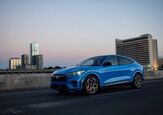
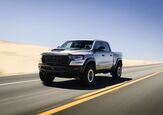


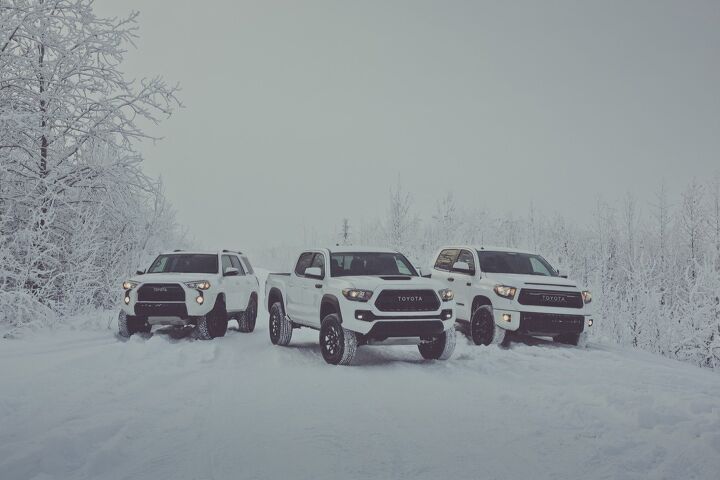
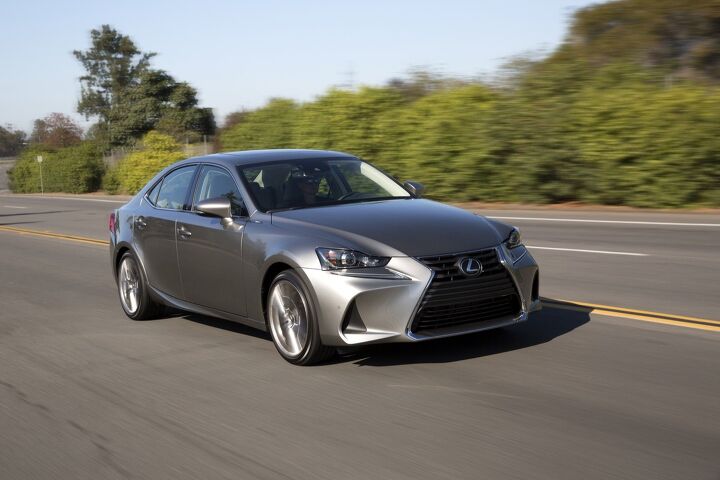
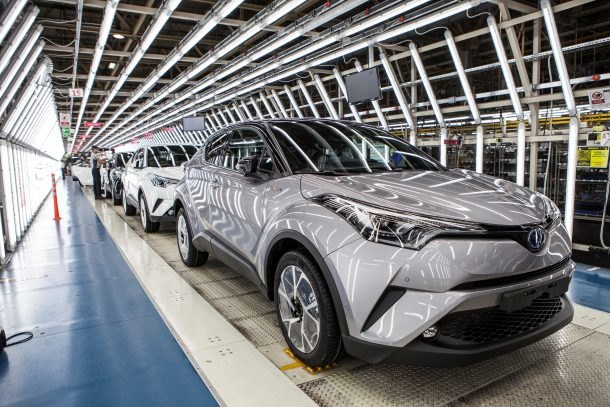

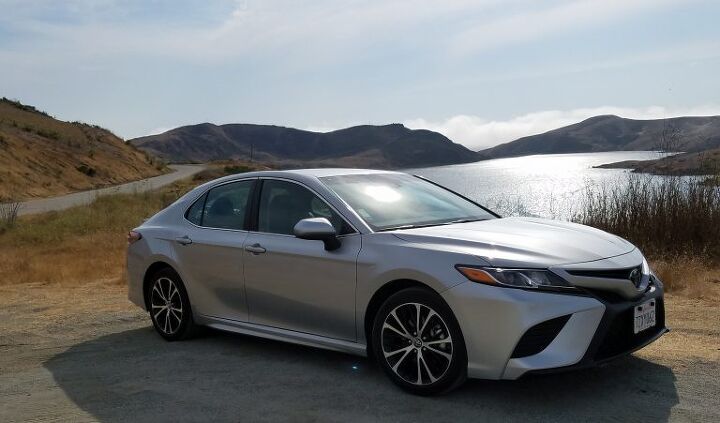
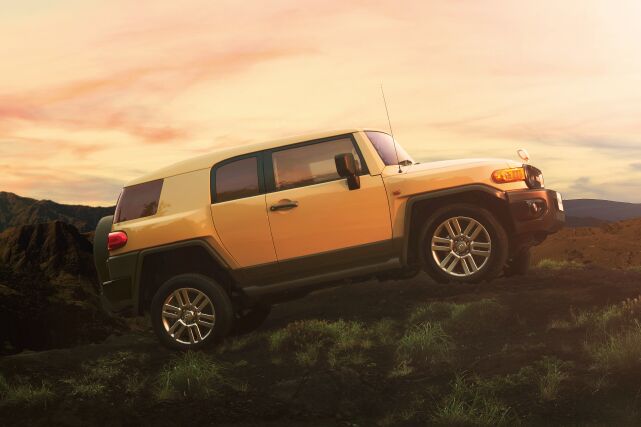


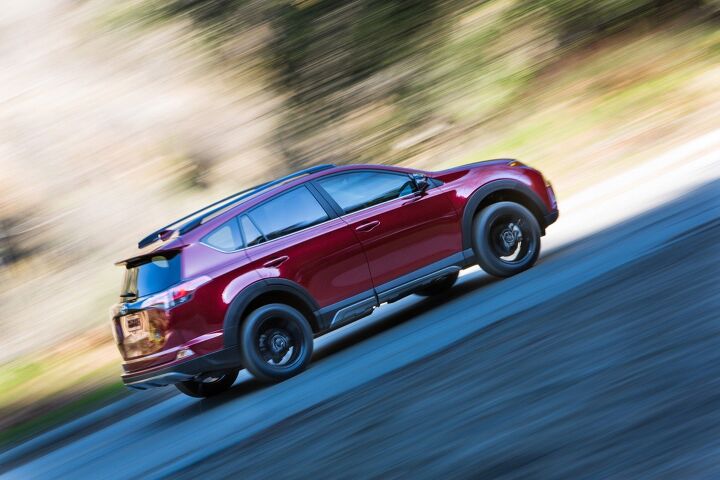
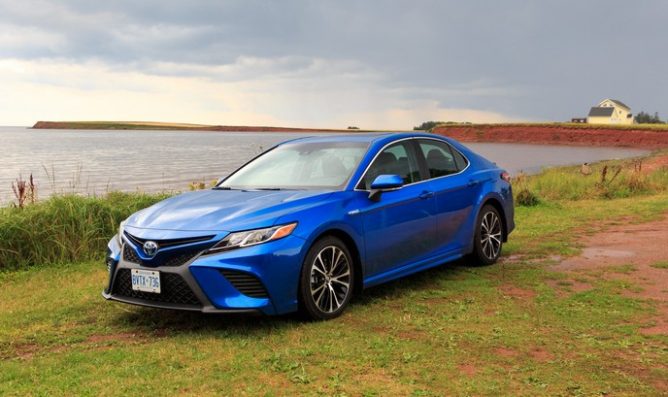
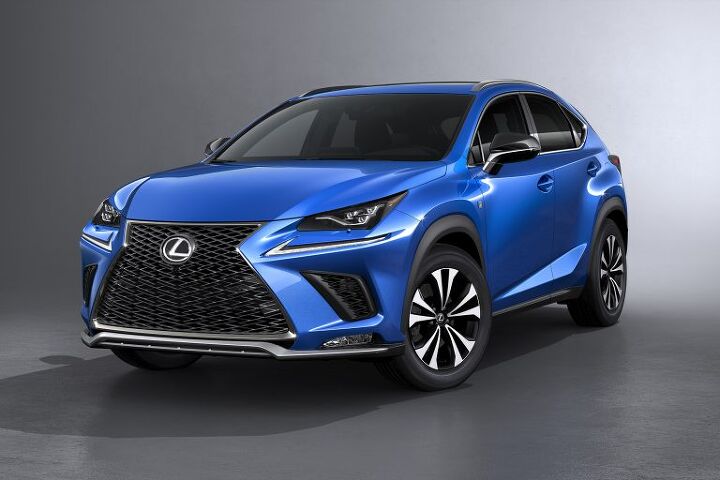
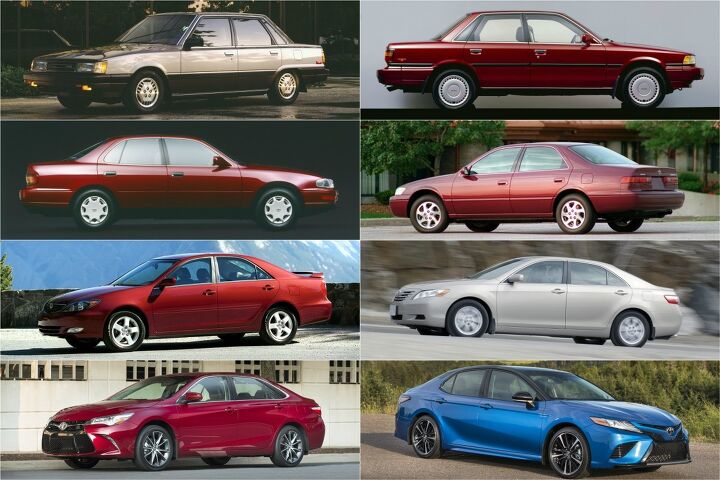
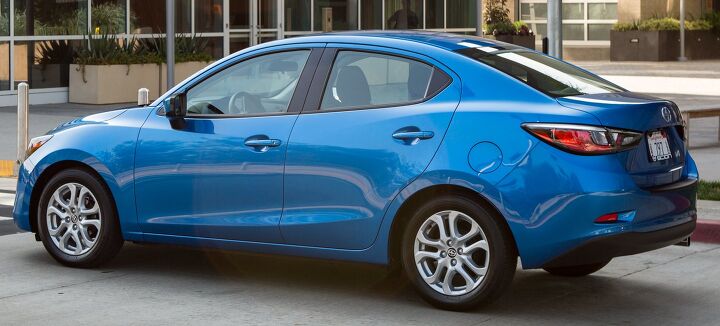


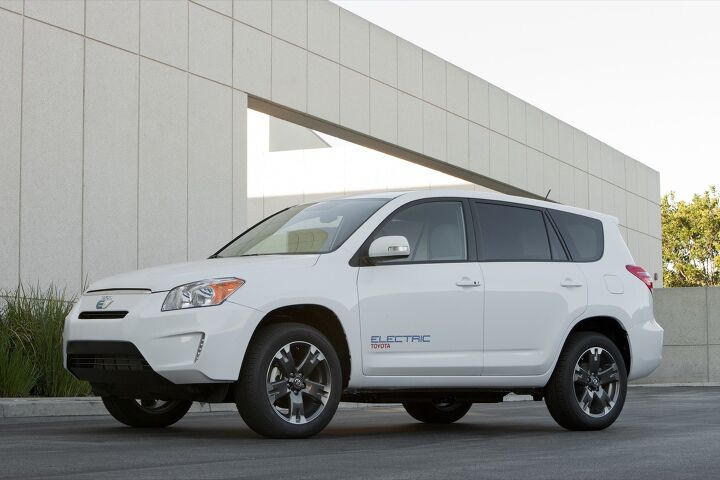

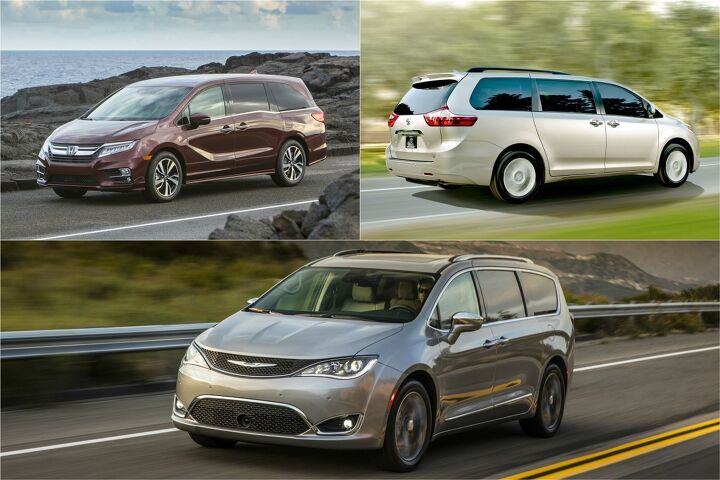
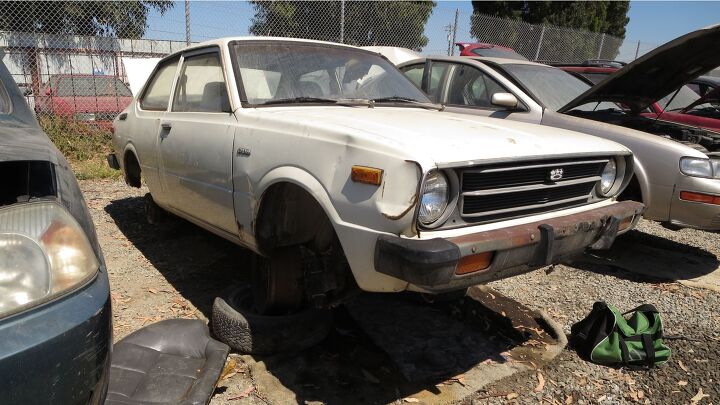


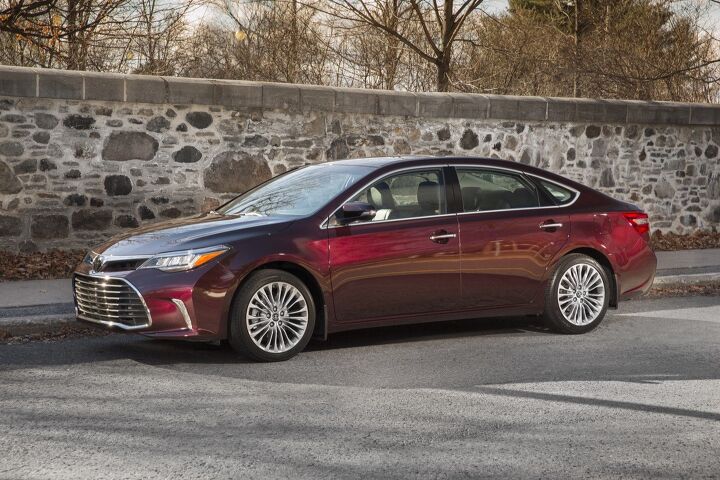

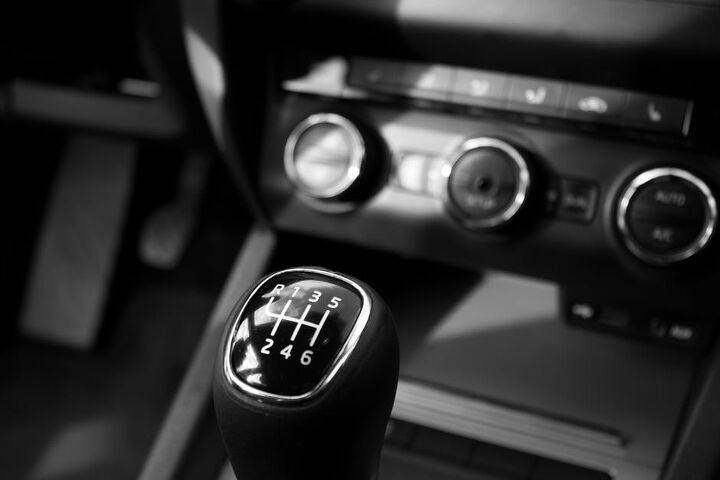
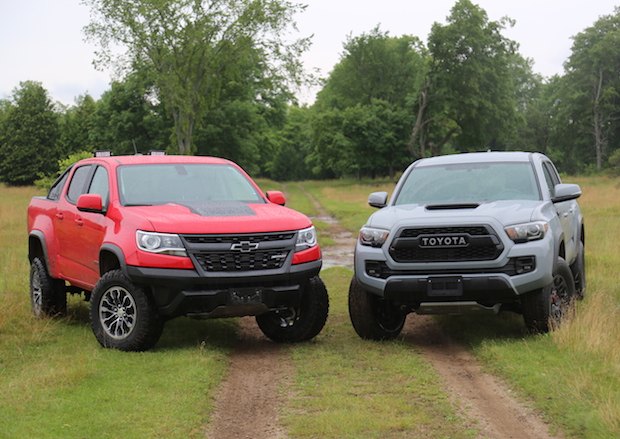




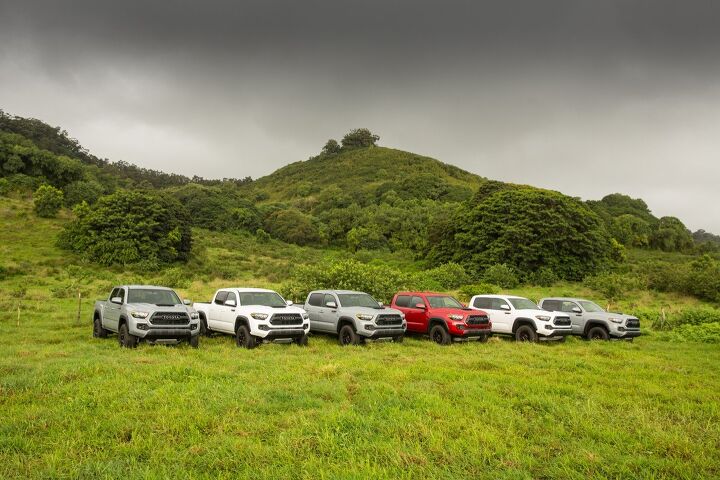

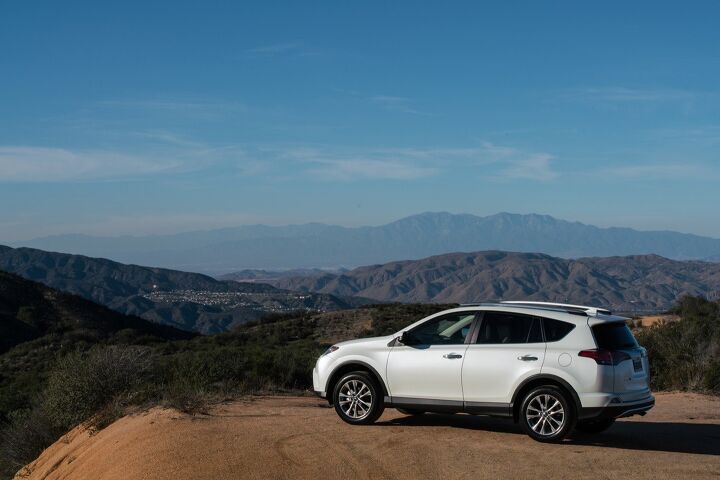
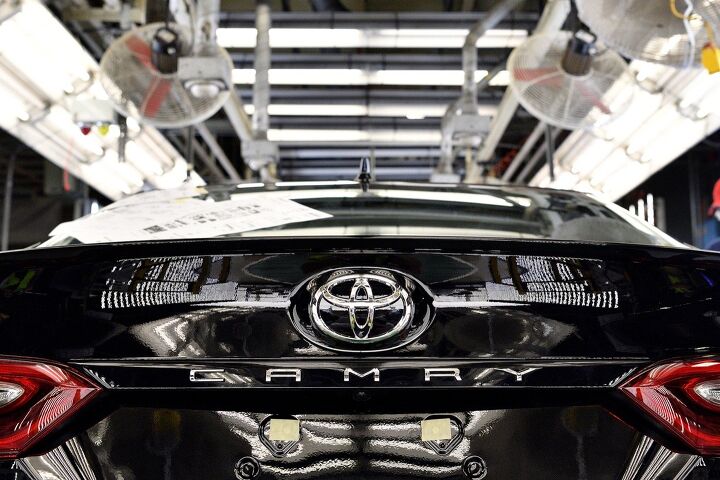
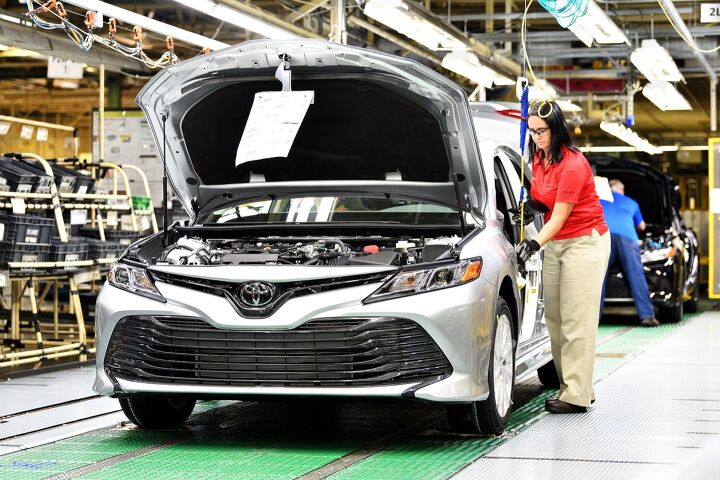

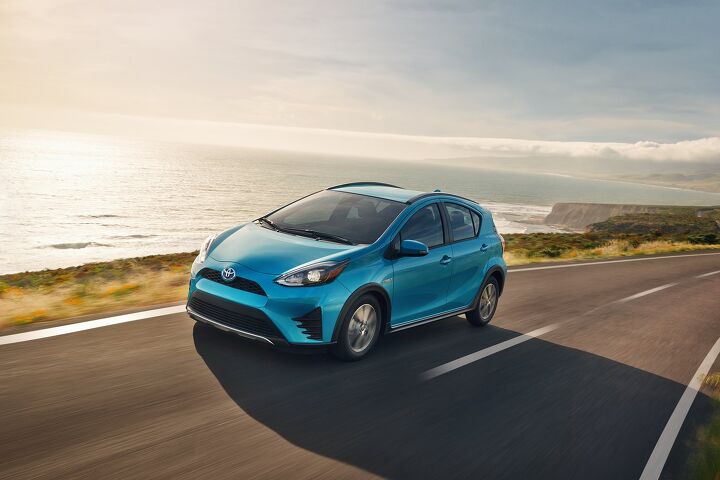
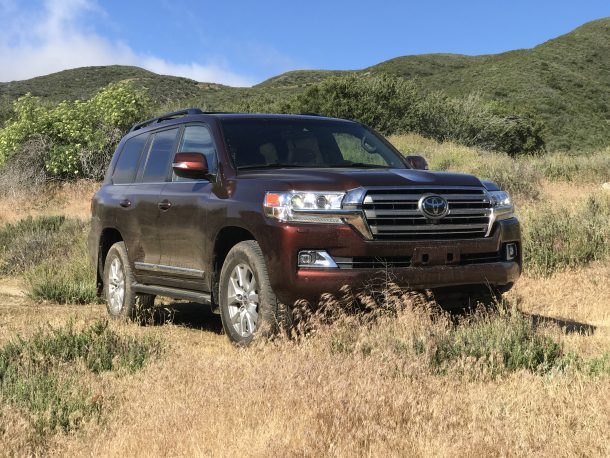




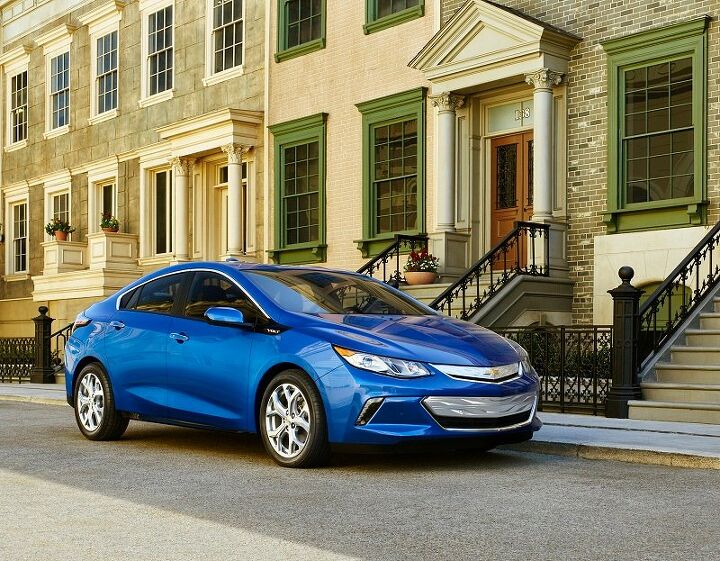
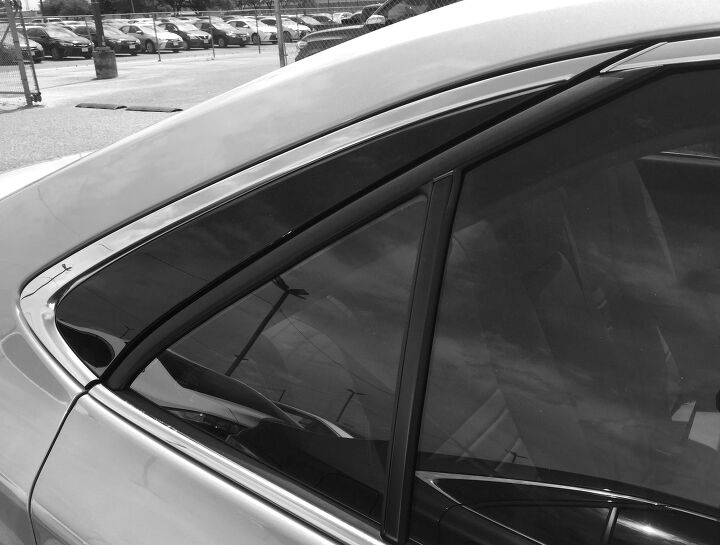
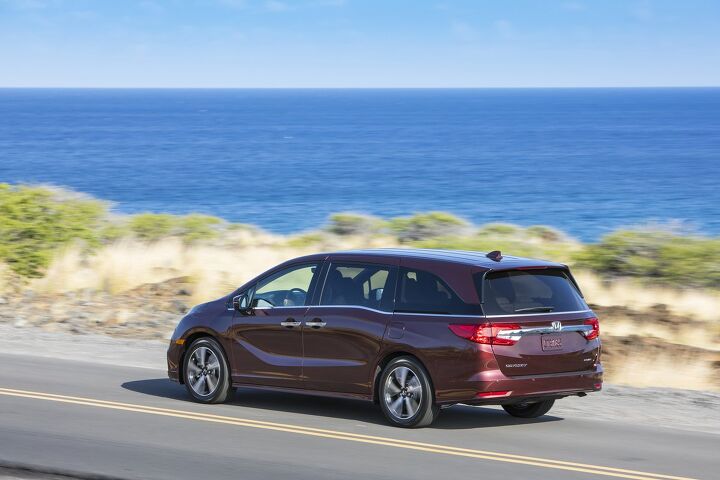

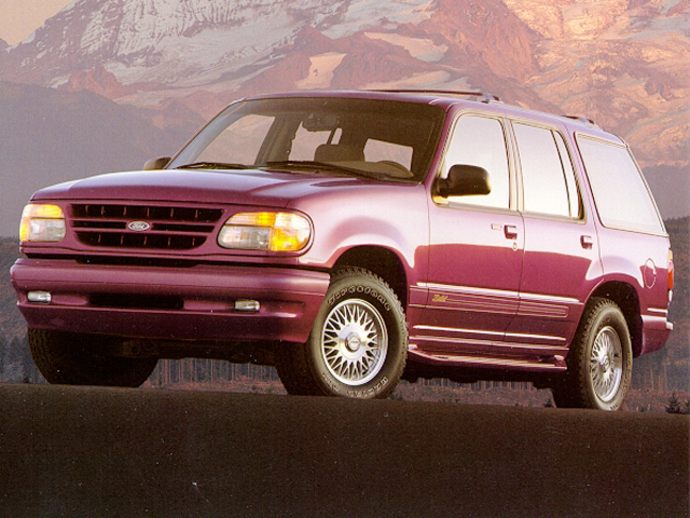
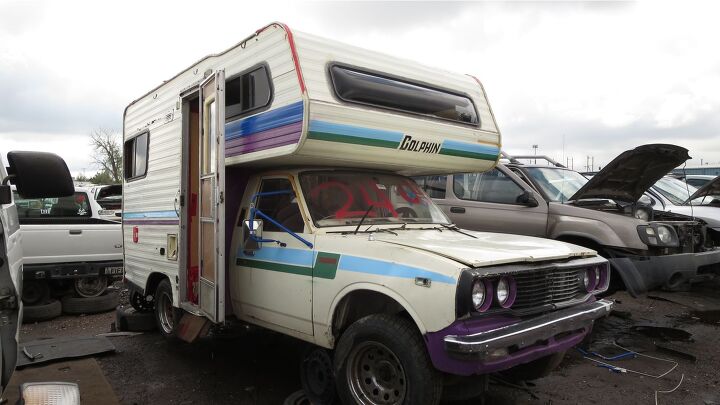
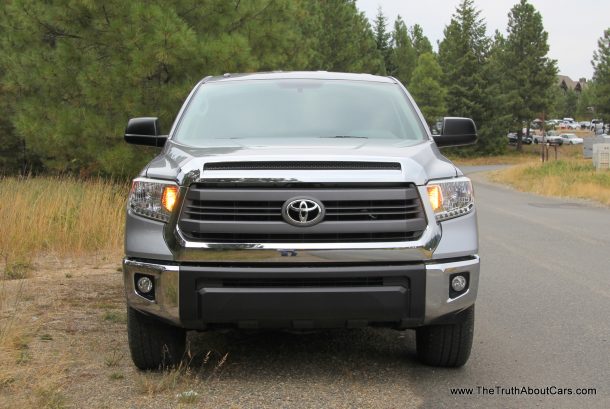
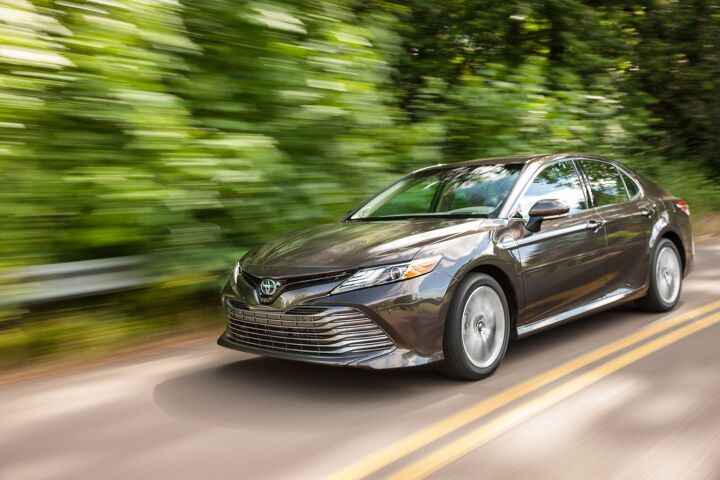

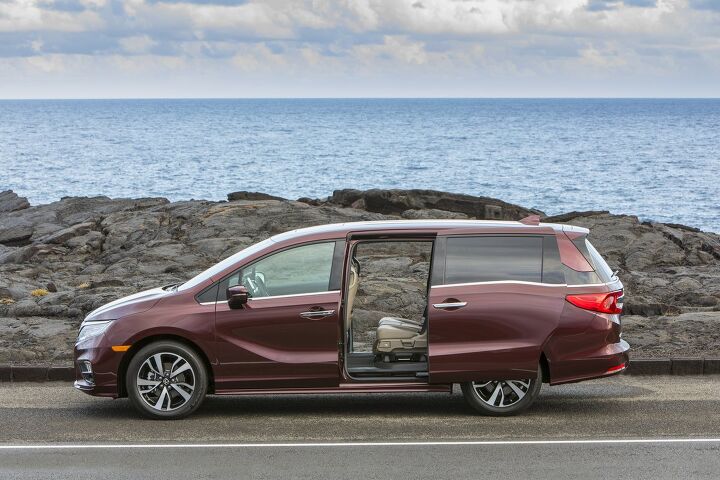
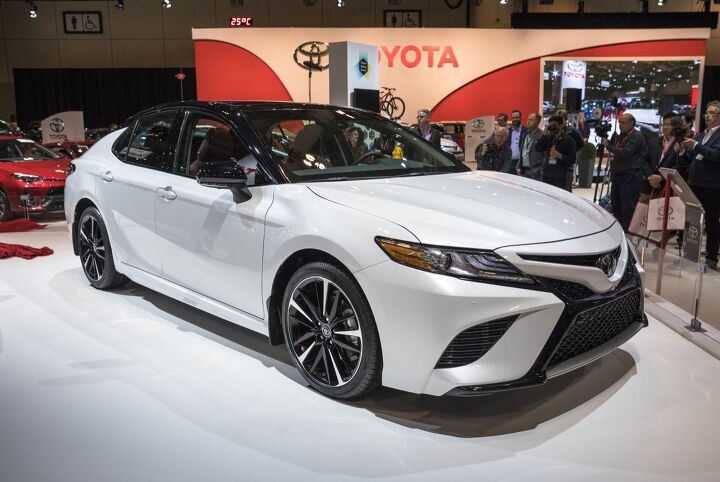
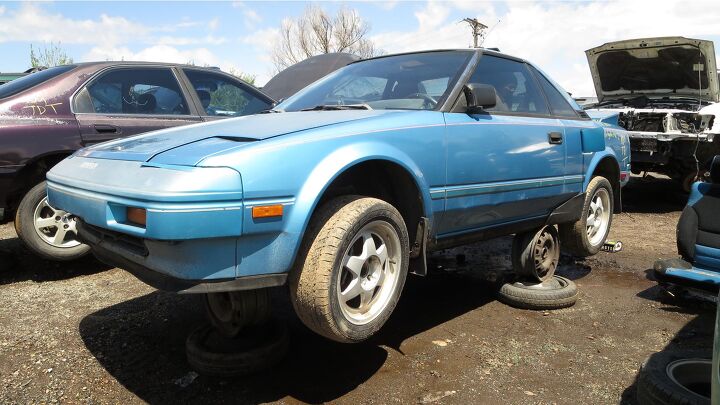

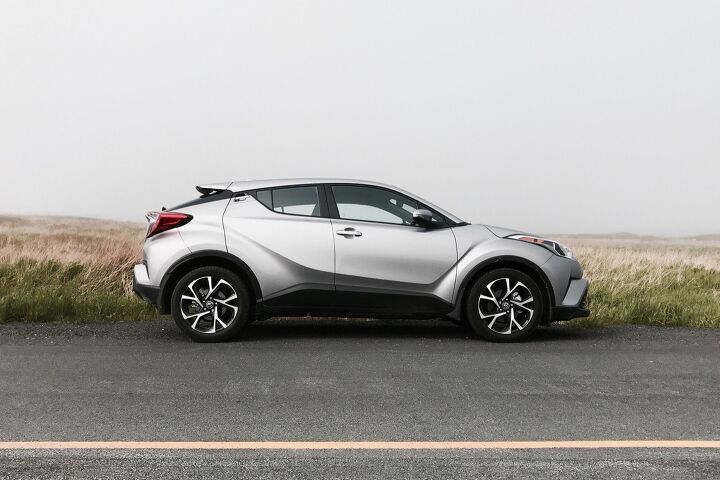
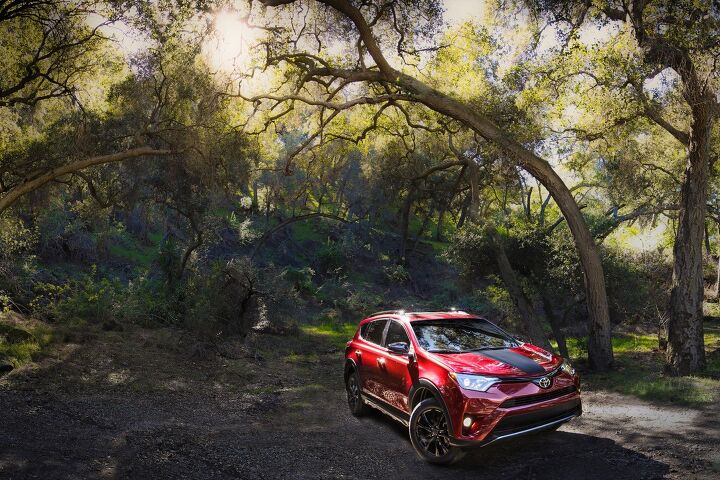















Recent Comments